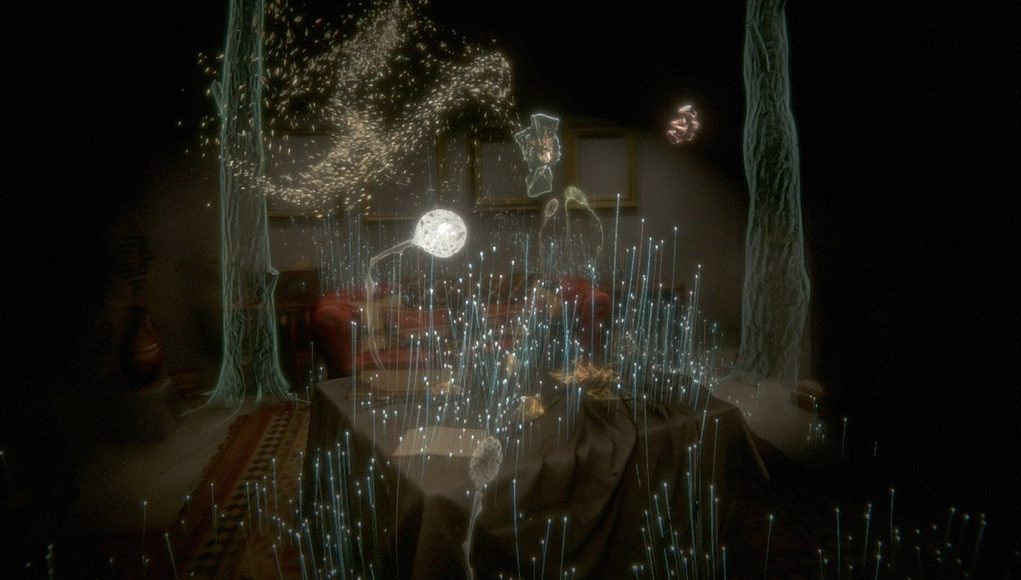Magic Leap today revealed a collaborative AR project with Icelandic band Sigur Rós, a musical experience which fills the player’s surroundings with ethereal visuals and an interactive soundscape.
Secretive startup Magic Leap still hasn’t officially revealed the AR headset that they’re working on, focusing instead on the experiences they say it will enable. Pitchfork’s Marc Hogan recently visited the company’s Florida offices to see a new Magic Leap AR experience built in collaboration with the band Sigur Rós.
Hogan’s article focuses mainly on the musical experience which is called Tónandi; Sigur Rós has reportedly been working at some level on the collaboration for four years or so. The eight to ten minute experience is described as taking over a living-room sized space with a mystical realm that’s interactive by movement and touch.
Two new photos revealed in the article show what the experience is purported to look like through the headset, though the “Shot in Engine” disclaimer suggests this isn’t a true view through the headset’s lenses (indeed, it appears that background is a CGI template of the real-world demo room), though Magic Leap has revealed footage previously that they claim is shot through the lens.

Not quite a song, but not just an instrument either, Hogan summarizes the feel of the experience as such:
The Tónandi experience is more like hiking or scuba-diving in your house while also being surrounded by supernatural beings. It’s appealingly disorienting. By the end, orchestration is sizzling—I can almost feel it—through my fingertips. When it’s over, I ask if I can go again.
Though Hogan specifically notes he can’t talk much about the Magic Leap headset itself, the article does reveal a few telling details. He says he used the “current incarnation of Magic Leap,” and that the headset has hand-tracking for interacting with the AR world, and, ostensibly, positional tracking for moving about the room-scale experience.
Hogan appears to have also left us a significant hint, revealed by reading between the lines, about Magic Leap’s capabilities. He talks about today’s limitations of AR headsets, and doesn’t say anything to suggest that the Magic Leap headset improves upon them, including the need to have the device attached to a battery pack.
There are a few widely documented problems with augmented reality devices in general. They look silly. They have a narrow field of vision, so while what you see through the goggles looks amazing, you can still see unmixed reality in your peripheral vision. And they require so much energy that, for the foreseeable future, they’ll need to be connected to a battery pack.
He further went on to say that Tónandi feels like it’s nearly ready for public consumption, though Magic Leap still hasn’t officially announced the device or indicated when it might ship.
Earlier this year, Magic Leap made a major update to its website, apparently in preparation for a forthcoming launch. In September, Bloomberg reported that an initial batch of Magic Leap’s first device could be sent out “to a small group of users within six months,” priced between $1,500 and $2,000. In October the company raised an additional $502 million in venture capital, further increasing its massive lead as AR’s top funded startup, and one of the top funded tech startups in the world.







